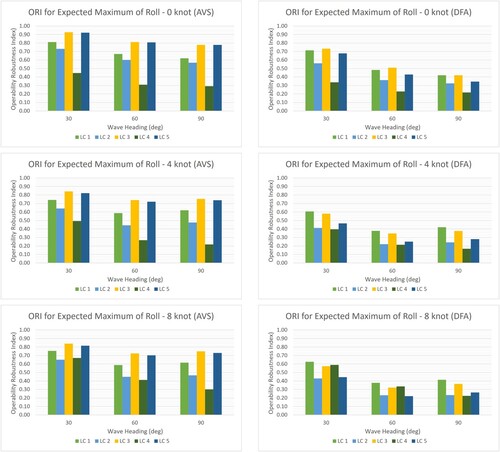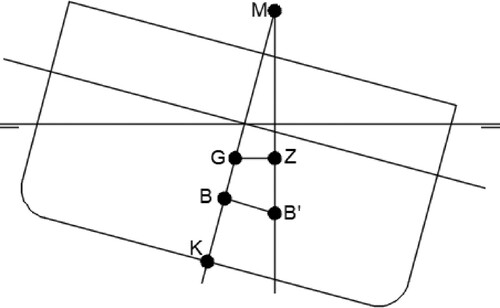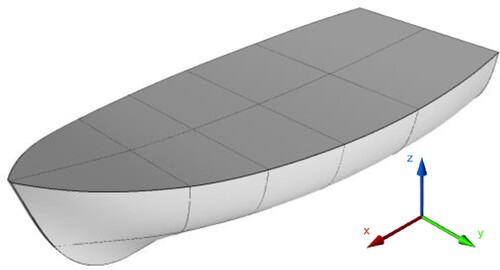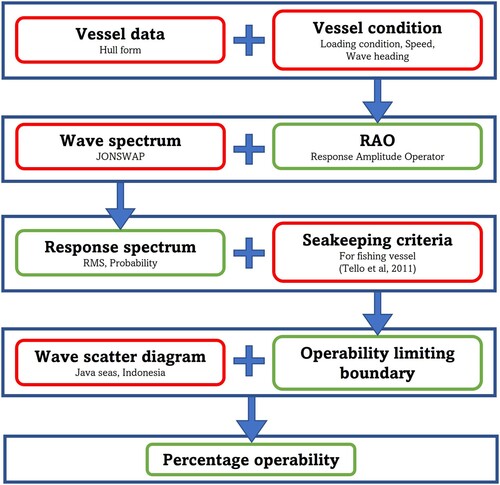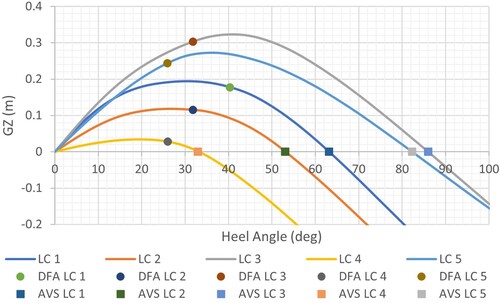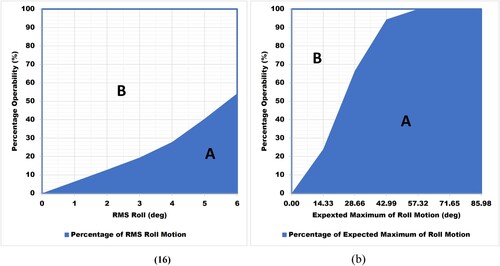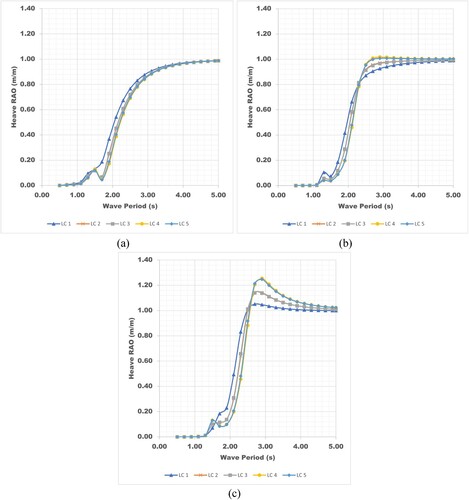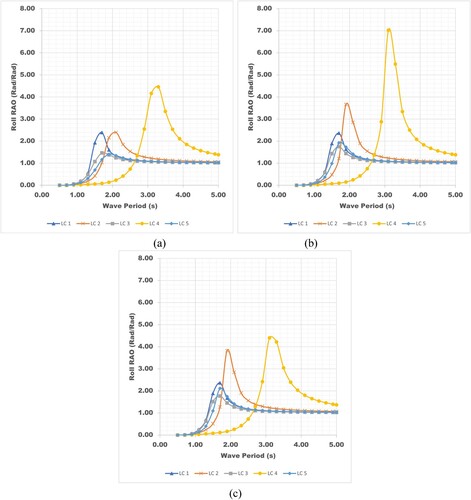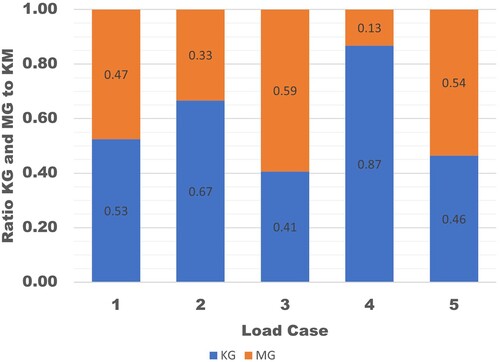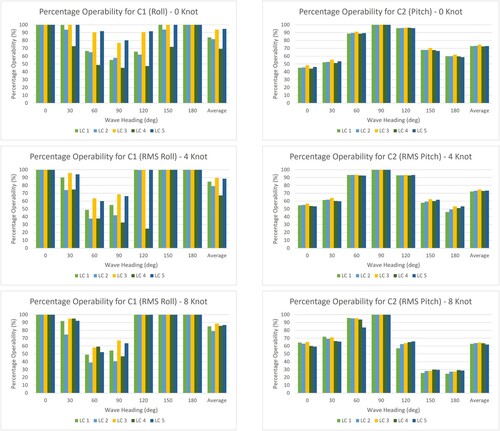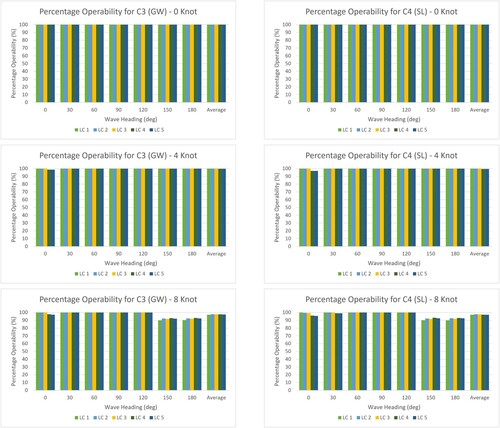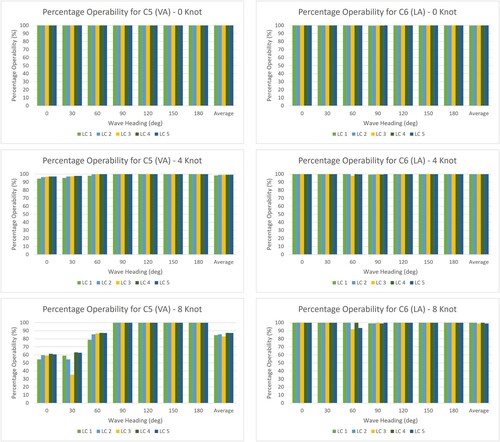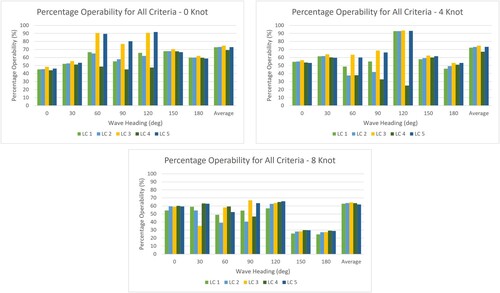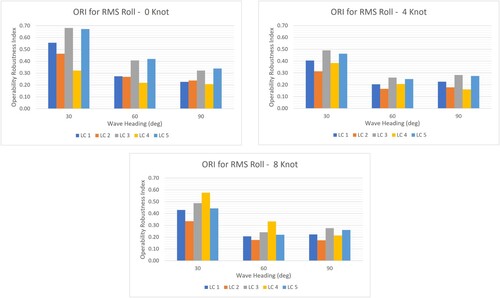Figures & data
Table 1. The accident types for fishing vessels.
Figure 4. Body Plan of the Research Object (Liu et al. Citation2019).

Table 2. Main Dimension of the Boat (Tezdogan et al. Citation2018).
Table 3. Load Scenario.
Table 4. Equilibrium Condition.
Table 5. AVS and DFA for Load Case 1–5.
Table 6. Seakeeping Criteria for Fishing Vessel (Tello et al. Citation2011).
Figure 6. Location of Wave Scatter (www.bing.com/maps).
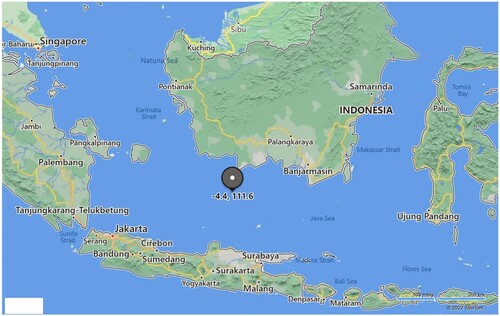
Table 7. Wave Scatter Diagram (https://app.metoceanview.com/hindcast/).
Figure 12. Operability limiting boundary in wave heading 60°, at 8 knots for Load Case 1 (a), Load Case 2 (b), Load Case 3 (c), Load Case 4 (d), Load Case 5 (e).
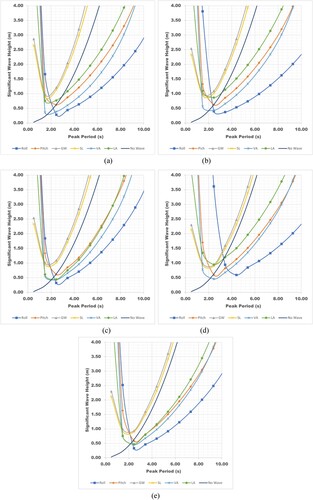
Figure 19. Operability Robustness Index (ORI) Value for Expected Maximum Roll Motion with different maximum limiting angle.
